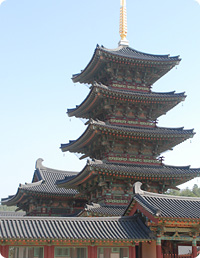EXCURSIONS
Southern Korea (A) 3 days
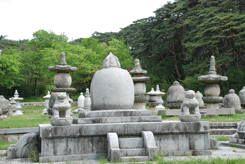
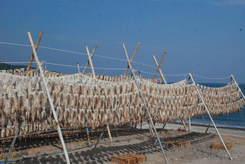
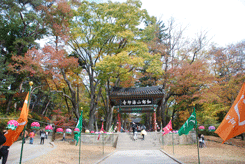
Tour Highlights
- Tongdosa Temple
- Tomb of King Munmu
- Gameunsa Pagodas
- Homigot Promontory
- Lighthouse Museum
- Yangdongmaeul Village
- Seokguram Grotto
- Bulguksa Temple
- Gyeongju National Museum
- Donggung Palace and Wolji Pond
- Cheomseongdae Astronomical Observatory
- Tumuli Park
- Daegaya Museum
- Haeinsa Temple
- Jinju Fortress
- Tongyeong Jungang Market
- POW Camp
Click on the days to access the program quick
| Days | Visits and Activities | Distance |
| Day 1 | Busan - Yangsan - Gampo - Homigot - Gyeongju | 230km |
| Day 2 | Gyeongju - Gayasan | 170km |
| Day 3 | Gayasan - Jinju - Tongyeong - Geoje - Busan | 270km |
Day 1 Busan - Yangsan - Gampo - Homigot - Gyeongju (- - -) 230km
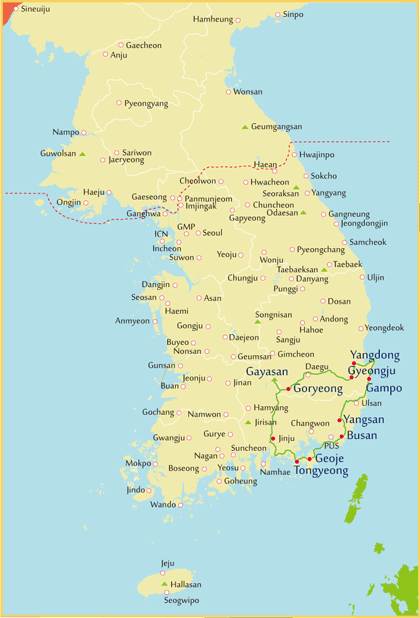 Your tour guide greets you in your hotel lobby and takes you on a tour to the 7th century Tongdosa, representing the Temple of the Buddha. The approach to the temple is completely entrancing. Magnificently set by a lane of pine trees dancing in the wind and beside which a mountain stream sings a babbling song, a distinctive and exalting place. The main worship hall is unique in that it does not contain a statue of the Buddha, but rather a window looking out onto the Diamond Precepts Altar with a bell-shaped stupa that contains the cremated remains of the Buddha himself. You will find the temple more like a museum as it houses many local treasures and cultural properties.
Your tour guide greets you in your hotel lobby and takes you on a tour to the 7th century Tongdosa, representing the Temple of the Buddha. The approach to the temple is completely entrancing. Magnificently set by a lane of pine trees dancing in the wind and beside which a mountain stream sings a babbling song, a distinctive and exalting place. The main worship hall is unique in that it does not contain a statue of the Buddha, but rather a window looking out onto the Diamond Precepts Altar with a bell-shaped stupa that contains the cremated remains of the Buddha himself. You will find the temple more like a museum as it houses many local treasures and cultural properties.
Then, stop at Gampo to see Tomb of King Munmu and ancient twin pagodas of Gameunsa temple. About 200 meter off the coast is an unusual underwater tomb of King Munmu. The king wished his body to be burned and buried at sea so he can protect his kingdom even after his death as a spirit of the sea. In the center of the calm sea a large rock marks the king's burial site. About 20m long rocky islet has a small pond at the center and at the bottom of it is a granite stone of 3.6m long, 2.9m wide and 0.9m high. At low tide, the top of this oval rock is almost visible above the sea surface.
On the nearby ancient temple site stands twin pagodas dedicated to the Dragon Spirit of King Munmu. The immense pagodas are considered the largest 3 story pagoda in Korea, and the temple is one of the most unusual of all Silla temples.
Homigot is a cape jutting out into the Sea and one of the easternmost points on the Korean peninsula. What makes this place more unique and famous is a massive bronze sculpture of a hand stretching up from the water in a small cove. One stands in the middle of the plaza and the other one is partway into the sea. The palms of the hands face each other, symbolizing harmony and coexistence. Homigot serves every year as a gathering place for thousands to greet Korea's first sunrise of the New Year.
Near the sculptures sits lighthouse museum featuring 3,500 items used in the early days of Korea's lighthouse history, along with numerous tourist shops, seafood restaurants, peddler tents and the likes.
You will explore UNESCO World Heritage Site, Yangdongmaeul, a delightful journey to the traditional clan village which embraces simple, unadorned natural beauty. There are some steep hills to climb but also easier streets. Over 150 homes as well as two shrines are in perfect harmony with the natural topography, presenting different angles where walls ascend a hill interspersed with tiled roof houses or thatched roof buildings.
Gyeongju is an ancient capital of the Silla dynasty (BC57-AD935), often dubbed as Museum without Walls. Today, you are treated to one of the ten most historically significant sites in the world with ancient temples, weathered stone pagodas, royal tombs, Buddhist bas-reliefs, and fortress ruins.
Day 2 Gyeongju - Gayasan (B) 170km
With a full day to further explore the delights of UNESCO World Heritage Site, Seokguram grotto. It is the home of the serene stone Buddha of the eighth century. Inside, a white statue of a seated Buddha in a sublime state of enlightenment, is surrounded by 37 relief figures of Bodhisattvas, disciples, devas, and guardian kings. The grotto represents the magnificent harmony of religion, science and the arts of Buddhism, symbolizing the pure land in which Buddha resides.
A short ride leads you to another UNESCO World Heritage Site, Bulguksa temple, where you will witness the impressive gates, symbolic bridges leading up to the world of Buddha, graceful architectures, Three-storied Seokgatap and highly ornate Dabotap blending well into the architectural harmony.
At Gwaneumjeon hall, check out the image of the Avalokitesvara who is referred to as the Bodhisattva of Compassion and has a thousand hands, and eyes in each so as to reach out to those in need of help. You will see a gilded statue of Vairocana with the gesture of the first wisdom, Sakyamuni Buddha attended by two bodhisattvas along with sixteen figures of Buddha's disciples sitting in deep meditation, and a gilt-bronze Amitabha Buddha, the ruler of the Western Paradise Sukhavati. The architectural design of Bulguksa is one of constrained dignity, peace, and harmony and the temple still remains one of the most remarkable achievements of the ancient Far East
The Gyeongju Historic Areas contain a remarkable concentration of outstanding examples of Korean Buddhist art, in the form of sculptures, reliefs, pagodas, and the remains of temples and palaces from the flowering, in particular between the 7th and 10th centuries, of this form of unique artistic expression
Visit Gyeongju National Museum. The first thing that you will notice is The Bell of King Seongdeok, the largest extant bell in Korea. You must certainly stand in awe before the bell from the 8th century with such artistic beauty of design. The bell is distinguished not only for its outstanding beauty but also for its long reverberating sound, the incredibly precise casting technique, in addition to the sad legend surrounding it. On entering the museum, you will marvel at the priceless archaeological and historical artifacts including splendid gold crowns, earrings, belts, ornaments, glassware, potteries, and clay figures as well as a royal barge.
Afterwards, explore Donggung palace and Wolji pond, a pleasure garden built to commemorate the victory of Silla, and later used as the recreational area for the Silla's royal family, then followed by the tour of the world's oldest existing astronomical observatory, Cheomseongdae. Each stone used in the observatory bears symbolic meaning; the same number of the days of the year by lunar calendar, the number of the major stars, the months of the year and the numbers of the seasonal divisions. Nearby Tumuli Park encompasses 23 huge tomb mounds where Silla rulers were buried. One of the tombs, Cheonmachong, is opened to the public and you can go inside and see how the tombs were made and replicas of the treasures excavated in 1973.
Day 3 Gayasan - Jinju - Tongyeong - Geoje - Busan (B) 270km
While in Haeinsa, renounce each of 108 worldly desires of the mind as you climb 108 stairs. Within the Hall of Great Peace and Light, you will see Vairocana Buddha attended by Bodhisattvas and highly detailed and rather unusual wall paintings of the Buddha's life. And on the outside walls are a fair number of paintings portraying Buddhist stories. At the back of this hall is a group of four depositories or Janggyeong Panjeon from the 15th century. Housed within the depositories are 81,258 wood-blocks of Tripitaka Koreana the world's oldest and a complete collection of the Buddhist sutras as well as an offering to the Buddha for national protection from the looming Mongol forces.
The printing blocks are some 70cm wide, 24cm long and 2.8cm thick on the average. Each block has 23 lines of text, each with 14 characters, on each side. Each block thus has a total of 644 characters on both sides. Some 30 men carved the total of 52,382,960 characters in the clean and simple style. The characters are perfectly carved as if from the same hand. They were completed in 1251 after 16 years of work on Ganghwado and were transported here for safekeeping. The Mongol forces eventually took over the Goryeo Dynasty but the wooden blocks remain preserved today having survived other invasions, wars and fire. Even more amazing aspect is that neither birds built nests nor spiders make webs on these buildings. Check out two long depositories are designed to have natural ventilation by facing different size windows in the front and rear of the building. Tripitaka Koreana and Janggyeong Panjeon have been designated by UNESCO as a World Heritage for their artistic as well as religious value.
In order to control the temperature and humidity within the depositories and protect the Janggyeon Panjeon and woodblocks from fire, full-time security guards and a 24-hour surveillance system are in place.
Jinju is a charming city set by the picturesque Namgag river and a home of 350,000 people. When Japanese troops breached the inner wall in the 16th century, a faithful girl Nongae plunged into the swirling river holding a Japanese general tightly in her arms, drowning both. Jinju fortress contains gates, pavilions, shrines, watch towers and the Jinju National Museum displaying historic artifacts and documents that speak to the Hideyoshi's invasion.
Tongyeong is a traditional seaport of great charm and historical interests. Tour the Dongpirang village where you will enjoy witty and delightful murals and sweeping view of Tongyeong harbor. This village was on the verge of being torn down, but what were once shabby houses now welcome visitors with radiant colors.
On a long stretch of quay-side is Jungang market, and you will witness a lively atmosphere as vendors and visitors try to make a deal. Rows of seafood restaurants and local eateries offer anything that comes from the ocean, the sights, sounds and smells of a fishing port. At the nearby Gangguan port, you may want to step in to the replica turtle ship from the 16th century.
Geoje is a shipbuilding Mecca featuring several natural harbors. And once was the final port of call of the SS Meredith Victory at Christmas 1950. It is best known for evacuating more than 14,000 refugees in a single mission in the largest humanitarian rescue operation by a single ship during the Korean War.
There’s time to visit the POW Camp which at one time held around 170,000 prisoners in 28 facilities until an armistice was concluded in 1953. The former camp has been reborn as a historic park with various exhibition halls that help visitors comprehend the actual situation at the time and gives visitors an up close lesson on the devastating consequences of the war. POW camp accommodated 150,000 North Korean soldiers and 20,000 Chinese soldiers.
Today, you will experience the deepest highway on earth, Geoga bridge, a 8.2km-long bridge which is a combination of two cable-stayed bridges built on the open sea, a number of approach bridges and tunnels built on three islands in the middle and a 3.7km-long immersed tube constructed 48m below mean water level.





